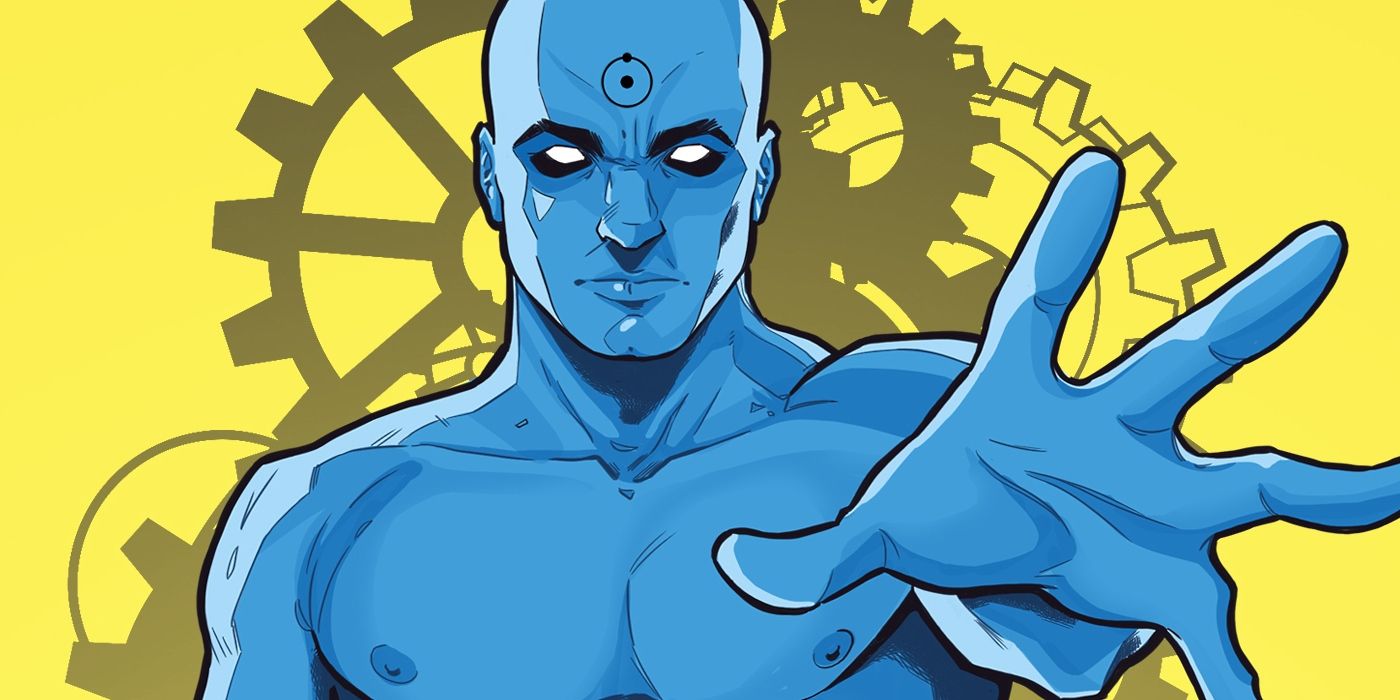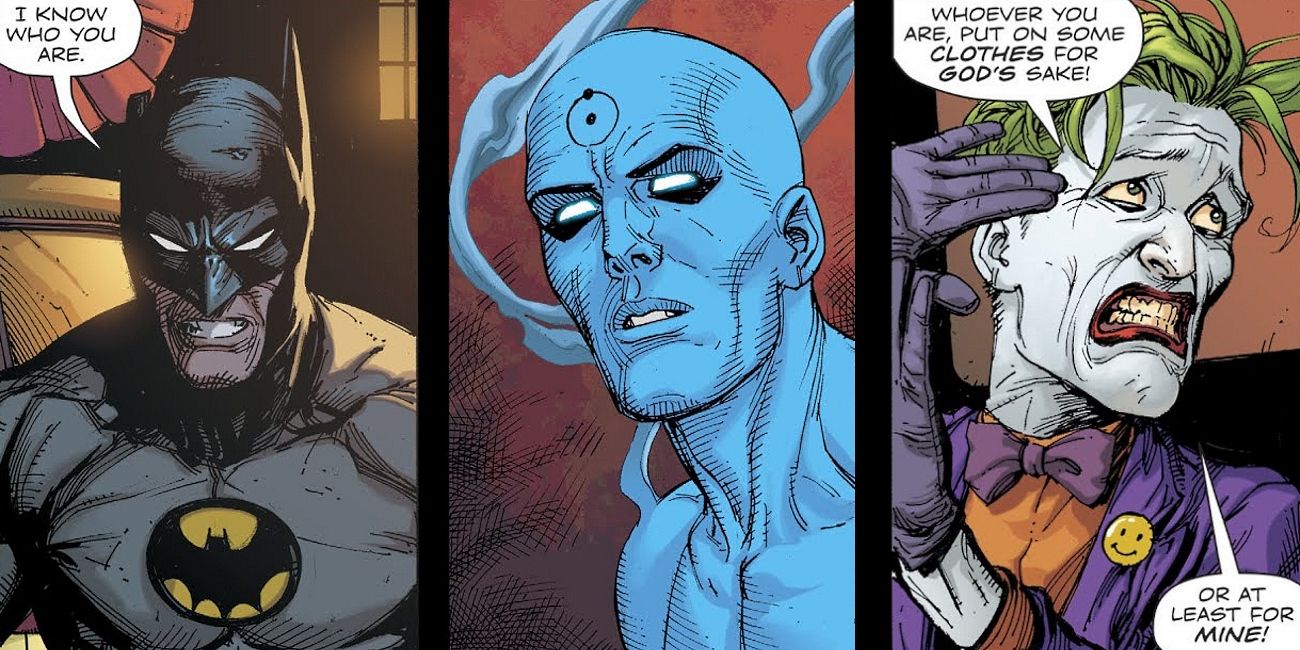Warning: SPOILERS For Doomsday Clock #7
The latest issue of the Doomsday Clock mini-series has confirmed the identity of the architect behind the rebirth of the DC Comics reality and their connection to the world of Watchmen. While the series to date has dropped numerous hints as to this revelation and many a would-be Batman had deduced the culprit before now, this issue marks the first time that the character in question has been openly acknowledged as altering the reality of the DC Universe.
The first sign of the architect's influence came in Justice League #50, when an unseen figure vaporized the New God Metron as well as the villains Owlman and Grid. DC Universe: Rebirth #1 ended with the mystic called Pandora suffering a similar death after she accused an unseen figure of being heartless for having created a universe without hope. The same fate awaited Eobard Thawne, The Reverse Flash, at the end of the Batman/The Flash crossover event "The Button."
Many fans noted that all these deaths resembled the manner in which Dr. Manhattan killed the vigilante Rorschach near the end of Watchmen and that the novel had ended with Dr. Manhattan saying that he had regained an interest in human life, further stating "I think perhaps I'll create some."
Related: DC's Mystery Killer Claims A New Victim
The first page of Doomsday Clock #7 recalls the origins of the first Green Lantern, Alan Scott, who gained his powers from a magical jade lamp. A narrator, whose dialogue boxes are rendered in the same shade of blue as Dr. Manhattan's internal monologue in Watchmen, describes how Alan Scott's empowerment led to the creation of The Justice Society of America. The narrator then describes how they changed things so the lamp that saved Alan Scott's life was out of reach and, with his death, the JSA never came to be in this world. This narration is delivered over images of a blue insect flying around the emerald lantern, symbolic of both a moth drawn to the flame and the butterfly whose flapping wings change the world on a quantum level.
The narrator is later confirmed to be Doctor Manhattan, who is confronted by all of the characters from the reality of Watchmen who are now on the prime Earth of DC Comics' multiverse. The action of Doomsday Clock to date has centered on Adrian Veidt's efforts to track down Doctor Manhattan and ask him to return to their world to save it from utter destruction. When Veidt is finally able to make his request, Doctor Manhattan refuses, saying that he is "in the middle of something."
While Doctor Manhattan does not elaborate on this point, he does suggest that he was not the original creator of the DC Comics multiverse as many suspected. He claims to have traveled to the DC Universe hoping that he might find a place among other super-powered beings. Dr. Manhattan's plans changed, however, after he used his quantum vision to look into the future and saw himself confronted by another superhero - "the most hopeful among them. Heading toward me. Now hopeless. And then I saw... nothing."
The end of Doomsday Clock #7 shows us this vision and which hero to whom Dr. Manhattan was referring. Though his powers normally allow him to see the hows and whys behind future events, for once Doctor Manhattan does not know what brings this battle about. Nor can Dr. Manhattan begin to guess if why he cannot see beyond this point is because that is when he dies, or if the conflict with the other hero causes him to destroy reality.
Doomsday Clock #7 is now available from DC Comics.


